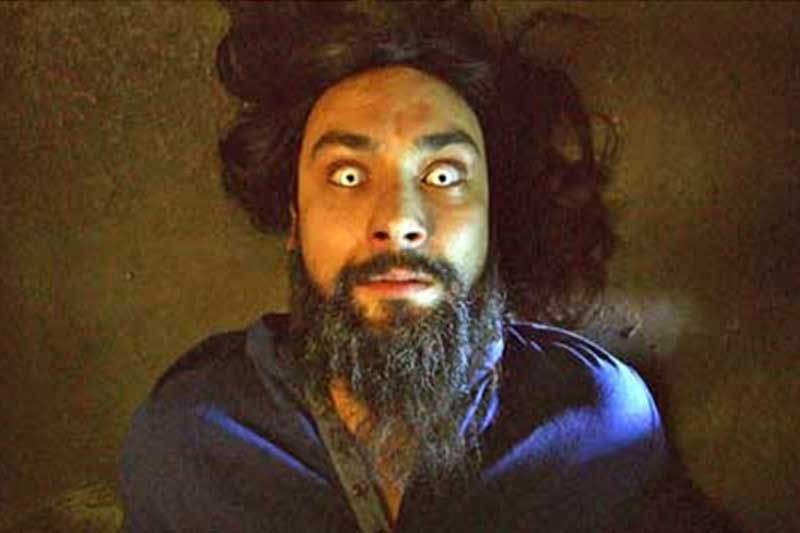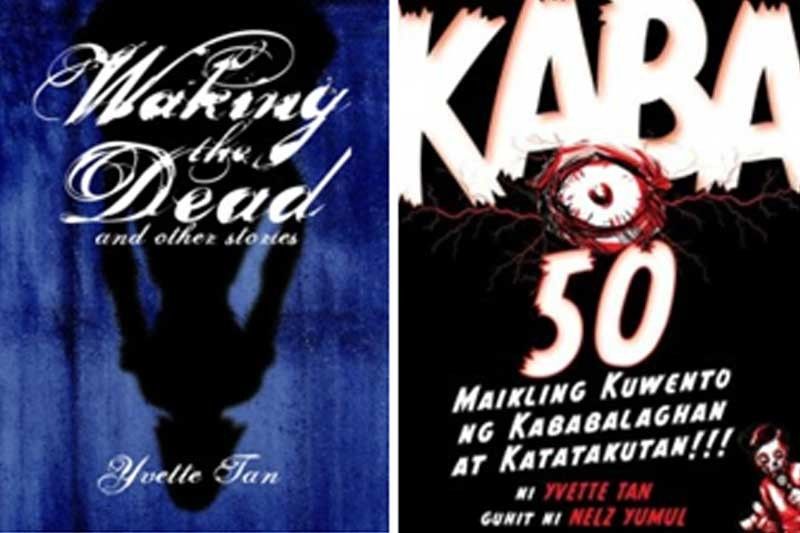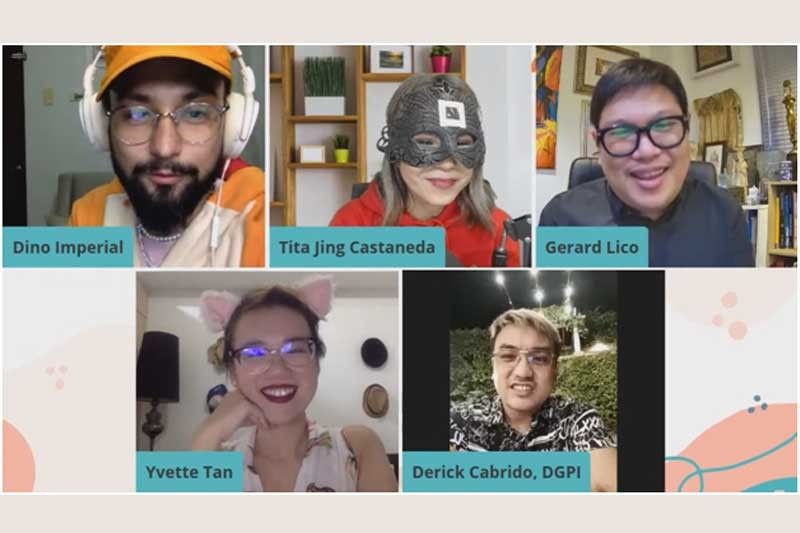The scary and the supernatural influencing Philippine culture

Fun fact about me: I love paranormal activity. From spooky stories to horror films, I am a self-confessed fanatic and a firm believer that we live among supernatural creatures.
In addition to my love for the paranormal, psychics, astrologers and Fengshui experts have always said that I can sense what might come true, that I have a third eye and that I just refuse to use it. My mom has always been the first one to agree. She told me that when I was small and she got pregnant with our fourth sibling, I warned her that, “Hindi 'yan matutuloy.” True enough, she had a miscarriage on her seventh month. As I grew older, there were also several similar instances wherein I could sense what might happen
Recently on "PamilyaTalk," I invited guests from different fields to talk about their personal experiences in the matter. What I discovered: A plethora of hair-raising stuff about the supernatural!

Real stories from real people
My co-host Dino Imperial, for instance, claims to be a clairvoyant or someone who has the ability to predict future events. Imperial explained that his gift is similar to his role as Jethro Kabigting in the 2017 hit fantaseryeLa Luna Sangre. As much of a horror junkie as he is, certain events in his personal life manifested in ways that gave even himself chills.
Whereas the likes of Imperial are born with clairvoyance (he says it was inherited from his grandfather), others are able to enjoy folklore and consequently quell their fears when looking at it from a literary perspective. Yvette Tan, Palanca awardee and one of the most celebrated horror fiction writers in the country, said that writing horror stories takes plenty of research, which, in this genre, can be anything from historical facts to tsismis. Her short story “Seek Ye Whore” is one example.
“It’s inspired by the mail-order bride phenomenon,” Tan explained.” May isang foreigner nagustongmagkaasawa, tapos may nagsabisa kanya nabumili ng mail-order bride. Pumuntasyasa website, hindiniyaalambakitmura. Yun pala, tayong Pilipino, mahilig tayo satingi. Nakukuhanila ng tingiyung mail order bride nya, taposkailangangi-assemble.”
“Taposgumagalaw mag-isa yung bride. It’s always rooted in sapangyayarinatin. Kung may naririnigakongkwento, tapos kung type ko, gagawan ko ng istorya.

The title is a wordplay on Siquijor, one of many areas in the Philippines with strong ties to the supernatural. Something as unusual as buying potions from a sari-sari store is considered normal to inhabitants of the island, added Imperial.
Philippine horror making a global impact
Until now, our wealth of stories in Philippine folklore tales garner international attention. In 1953, Clarita Villanueva became a media sensation after being possessed by demons at what is now Manila City Jail. This event was later adapted into the 2019 movie Clarita directed by Derick Cabrido.
To keep the story authentic, Direk Derick hired an exorcist from the Vatican who provided him audio recordings and transcripts of exorcisms, including that of Clarita.

“Noong binabasa ko 'yung transcripts, habang pinapakinggan namin, 'yung language na ginamit is Hebrew, Aramaic, may Latin, German. Walang Filipino pero Pinay yung victim. Yung ginamit namin sa materials is si Clarita kasi siya 'yung first na diabolical possession sa buong Pilipinas. Ang hawak nalang namin transcripts kasi noong panahon niyan, walang mga ganung recordings. Pero 'yung (ibang) materials napinakikinggannamin (ay mga) recent cases. Meron taga-Laguna, taga-Pangasinan,” Cabrido explained.
Perhaps the most unique part of scary stories is how working with such material can be haunting in itself.
“Naririnig mo na kung ano 'yung sinasabi ng demonyo tapos nababasa mo sa harapan mo,”Direk Derick admitted. “For example, hindi namin maintindihan 'yungibang words. Kapag pina-paexplain mo na sa pari, doon nalang sasabihin kung ano ibig sabihin niyan. Magugulat ka talaga sa words na gagamitin, na kahit ikaw ay manliliit ka kasi nagmumura. May mga R-18 words kumbaga na sinasabi na against God na hindi mo ma-imagine na may nakakapagsalita pala ng ganito. Tsaka kapag sumisigaw, kinikilabutan kami.”
Exploring urban legends one infrastructure at a time
One of our guests, Dr. Gerard Lico, has likewise traveled across the country collecting his fair share of encounters, all of which are associated with old buildings. Years ago, workers at the Rizal Memorial Track and Football Stadium in Manila told him that there were mornings when they’d hear Japanese words being spoken. Upon further investigation, Dr. Lico realized that it was a massacre site during the Japanese Occupation. At Manila City Hall, which is near some of the oldest cemeteries in the country, people have a shared experience wherein they feel that there are spirits around. He also explored a hidden crib once used by spiritualists when renovating the Diplomat Hotel in Baguio.
A UP-trained architect and art critic, part of Lico’s job requires restoring old buildings and learning about their history.

“Whether literary or film, lagingmerong setting ng horror. Sa psychology ng mga Pilipino, ano ba 'yung mga spaces na nakakatakot? Ito 'yung mga espasyong related sa death, mga pinangyarihan ng gruesome events tulad ng war at violence: mga lumang building. Bakit lumang building? Sa sobrang katagalan niya, malaki 'yung possibility na merong something gruesome or kakaiba na nangyari.”
Lico recognizes, however, that Filipinos’ fascination for urban legends can sometimes mess with our collective imagination.
“Maskisa UP Diliman, dati raw ospital 'yung dormitory, eh hindi naman totoo. It has something to do with the perpetuation ng something nakakatakot na istorya. Nakaka-excite kasi makarinig ng mga ganyan. Ang pananakot is a form of social control. What’s forbidden, hindi mo pupuntahan kasi nakakatakot 'yung espasyo na 'yun. ‘Pag may kasamang semeteryo at may mgapatay, you will take it as a sacred ground,” he said.
Whether you are a believer in the paranormal or not, one thing is for sure. Urban mythology and stories of sightings and the supernatural—which have been around for centuries—will continue to be a big part of our culture and Philippine folklore.
--
Please watch Pamilya Talk on Facebook, YouTube, and Kumu (@JingCastaneda – 5:30-7:00 p.m. Monday, Tuesday & Wednesday). Please share your stories or suggest topics at editorial@jingcastaneda.ph. You can also follow and send your comments via my social media accounts: Instagram, Facebook, YouTube, Twitter and Kumu.



















